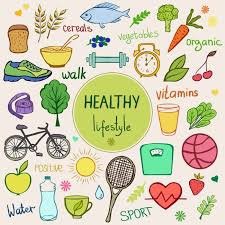Understanding Food Additives and Preservatives: A Comprehensive Guide
Food additives and preservatives are ubiquitous in our modern food supply, impacting taste, texture, appearance, and shelf life. This comprehensive guide delves into their roles, safety, and impact on our health, empowering you to make informed choices about the food you consume.
What are Food Additives and Preservatives?
Food additives encompass a broad range of substances added during processing or preparation to enhance various qualities. These enhancements can include improving taste, texture, appearance, or extending shelf life. Preservatives, a subset of food additives, specifically target the prevention of spoilage, significantly extending a food product's lifespan and minimizing the risk of foodborne illnesses.
The Essential Role of Additives and Preservatives
The incorporation of food additives and preservatives is crucial for maintaining food quality and safety. They act as a bulwark against bacterial growth, oxidation, and spoilage, thus ensuring food remains fresh and safe for consumption over extended periods. This is particularly important for maintaining a stable food supply and reducing the risk of foodborne illnesses.
Common Types of Food Additives and Preservatives
The food industry utilizes a vast array of additives and preservatives, each serving a specific function. Some common examples include:
- Artificial Sweeteners: Aspartame and sucralose are frequently used to provide sweetness without the caloric impact of sugar.
- Coloring Agents: Substances like tartrazine and cochineal extract enhance the visual appeal of food products, making them more attractive to consumers.
- Antioxidants: Ascorbic acid (Vitamin C) is a common antioxidant that prevents the oxidation of fats and oils, maintaining product quality and preventing rancidity.
- Emulsifiers: Lecithin and mono- and diglycerides are used to stabilize and homogenize food products, creating a smoother and more consistent texture.
- Preservatives: Sodium benzoate and potassium sorbate are widely used to inhibit the growth of bacteria and fungi, extending the shelf life of many food items.
Safety and Health Considerations
The use of food additives and preservatives is rigorously regulated by government agencies worldwide to ensure their safety for consumption. Extensive testing and evaluation are undertaken before approval for use in food products. While generally recognized as safe (GRAS), individual sensitivities and allergies do exist. Always check food labels if you have specific concerns or known allergies.
Concerns regarding the potential negative health impacts of these substances have been raised. However, extensive scientific research consistently demonstrates that when consumed within recommended limits, the risks to health are minimal. Moderation remains key in any aspect of diet and nutrition.
Natural vs. Synthetic Additives
Additives are derived from both natural and synthetic sources. Natural additives are sourced from plants, animals, or minerals, whereas synthetic additives are created through chemical synthesis. Both types can be safely used, provided they adhere to established safety standards and regulations.
Understanding Food Labels
Identifying food additives and preservatives on labels is crucial for informed consumer choices. Additives are typically listed by their specific names or assigned E-numbers, a coding system used within the European Union to identify approved additives.
Minimizing Additive Intake
While generally safe, individuals seeking to minimize their intake of food additives and preservatives can prioritize fresh, whole foods and home cooking. Preparing meals from scratch allows for complete control over ingredients, minimizing exposure to unnecessary additives.
Additives in Processed Foods
Processed foods, such as canned goods, frozen meals, and many snack foods, often contain higher levels of additives and preservatives than fresh, whole foods. Maintaining a balanced diet that incorporates a variety of fresh, unprocessed foods alongside processed options is a recommended approach to nutritional well-being.
The Role of Preservatives in Food Preservation
Preservatives are instrumental in extending the shelf life of food products. By inhibiting the growth of microorganisms such as bacteria, yeasts, and molds, they prevent spoilage, maintaining food quality and safety over time. This is especially significant in reducing food waste and ensuring food security.
Exploring Alternatives
Consumers seeking alternatives to certain additives and preservatives can explore natural options, such as employing natural herbs and spices for flavor enhancement or selecting organic products that are typically free from synthetic additives.
Balance and Moderation
Maintaining a balanced and moderate approach to food consumption is paramount. While food additives and preservatives are generally safe, excessive consumption of highly processed foods rich in these substances may not be conducive to optimal health. A varied and balanced diet is always recommended.
Cultural Perspectives
Different cultures and cuisines utilize food additives and preservatives in unique ways, often reflecting traditional practices and readily available ingredients. For instance, Asian cuisines may incorporate natural preservatives like soy sauce or fermented products, while Mediterranean diets may leverage the antioxidant properties of olive oil and herbs.
The Future of Food Additives and Preservatives
The food industry is continuously evolving, responding to growing consumer demand for cleaner labels and healthier options. Future trends suggest an increased focus on developing cleaner-label additives and innovative preservation methods that prioritize both food safety and consumer preferences for more natural products.
Conclusion: Informed Choices for a Healthier Diet
Understanding food additives and preservatives empowers informed decision-making about our food choices. While these substances play significant roles in our food supply, their safety and regulation ensure they can be consumed without undue health risks. Prioritizing fresh, minimally processed foods whenever possible, alongside mindful consumption of processed items, contributes to a balanced and healthy diet. By remaining informed and making conscious choices, we can enjoy a varied and nutritious diet, appreciating the benefits of both traditional and modern food production techniques.




No comments yet. Be the first to share your thoughts!